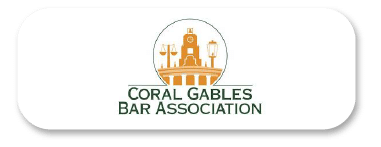Artists often draw inspiration from a muse when creating new and distinct creations of their own. But when do artists go too far when they borrow insight, inspiration, or parts of another person’s work? The acclaimed Andy Warhol, although deceased for thirty years, has faced recent scrutiny for his vivacious pop art pieces, often depicting celebrities.
What is Fair Use?
A copyright is a form of intellectual property that protects original works of art, authorship, and the right to derivative uses of the copyrighted work. Generally, copyrights give artists protection for the life of the author plus an additional 70 years following their death.
Although copyrights protect an artist’s intellectual and artistic expressions, it does not provide a catch-all bar to all use of copyrighted materials. Under the fair use doctrine, an unlicensed use of copyrighted material is permitted if the use is of limited portions and is for purposes such as educational use, commentary, and news reports. There is no direct test or threshold for what is permissive under the fair use doctrine, but it depends on all the circumstances. Copyrighted material may also be used if the new work’s purpose and character is sufficiently distinct from its original form. The doctrine seeks to balance protecting artists with artistic freedom of expression.
Case Overview:
In May 2023, the Supreme Court sided with celebrity photographer Lynn Goldsmith in a copyright battle with the Andy Warhol Foundation. Decades ago, Vanity Fair commissioned Warhol to create 14 silkscreens and two pencil illustrations based on Goldsmith’s photo of Prince in 1981. Goldsmith did license the use of her photograph to Vanity Fair when Warhol was commissioned to produce the paintings, but it was only for one time use. Goldsmith filed a copyright infringement lawsuit, claiming that Warhol infringed on her copyrighted photo by creating multiple art pieces. The Warhol Foundation opposed the suit, reasoning the purpose and character of its silkscreen works was fair use and the new art differed substantially from the original photograph.
In a 7-2 majority opinion, the Supreme Court further expounded on the meaning of fair use. Grounding its reasoning, Justice Sotomayor highlighted Warhol’s commercial use of Goldsmith’s photograph for his own gain. The Supreme Court found Warhol’s commercialization of the copyrighted photograph, created for commission, to be substantially similar to the original photograph. The discussion of Warhol’s commercial nature of the copyrighted work brings to light new considerations to the fair use assessment.
Impact on Future Fair Use Depictions
In its decision, the Supreme Court alters the fair use test, but it does not provide guidance in its application. A new, narrower form of fair use, looking at the commercial nature of the new work, may dramatically impact the art industry. Legal scholars and practitioners question how this will impact future copyright cases. If an artwork resembles another piece of art, this may raise questions of copyright infringement as both works would hold substantially similar commercial uses. This may pose significant challenges and questions to works that sample images from numerous pieces.
The decision may also impact those who rely on the fair use expectation within other forms of multimedia and scholarship, including the use of quoted materials in journalism and historians’ reliance on previously captured materials. In addition, the Warhol decision may have drastic implications for this emerging machine learning landscape. Generative AI art programs are built on machine learning models that analyze data associated with billions of copyrighted works on the internet. Pending lawsuits against tech giants, including OpenAI and Microsoft, regarding the unauthorized use of copyrighted code, may help answer these questions in the coming months.
While it is unclear how the AndyWarhol lawsuit outcome will affect future decisions, it will certainly muddy the waters for what is considered permissive fair use.








